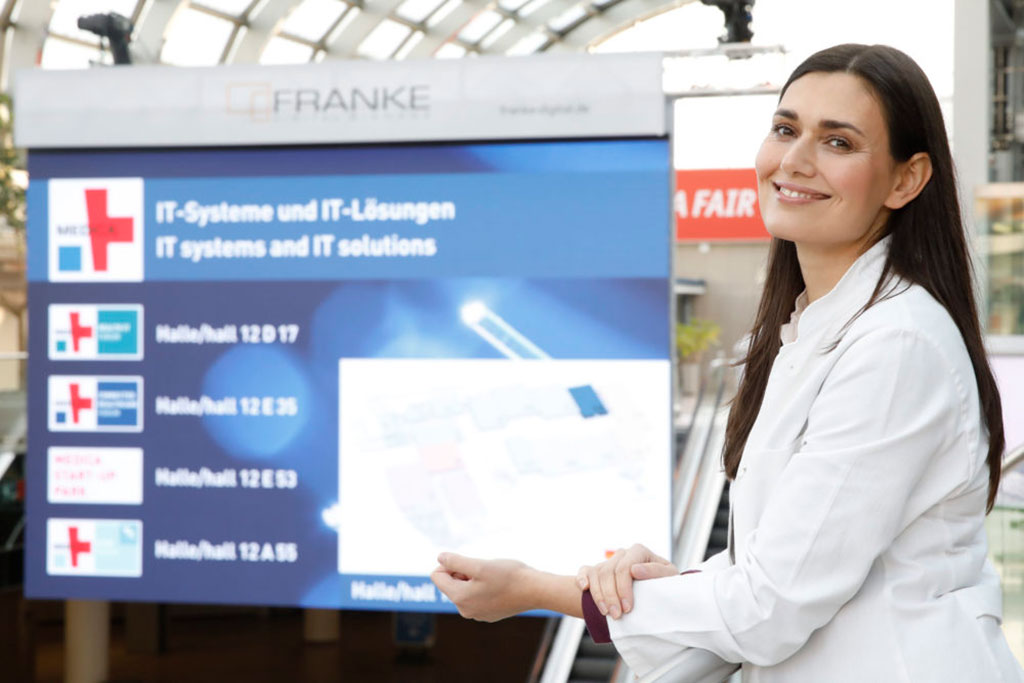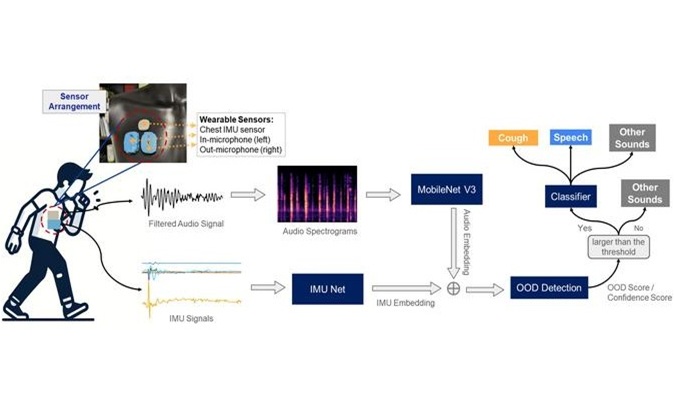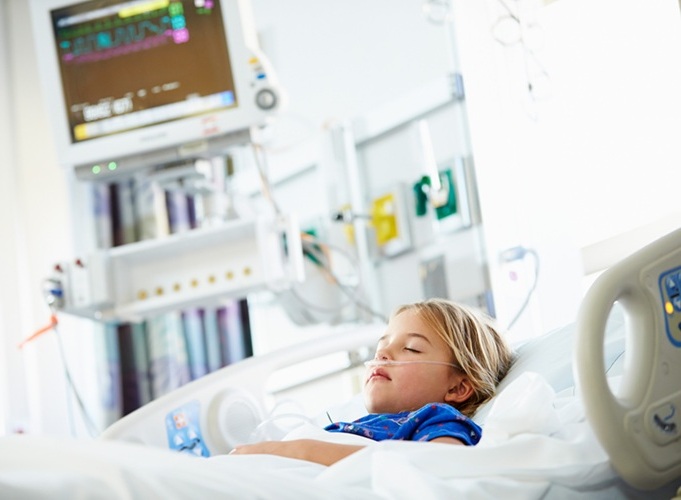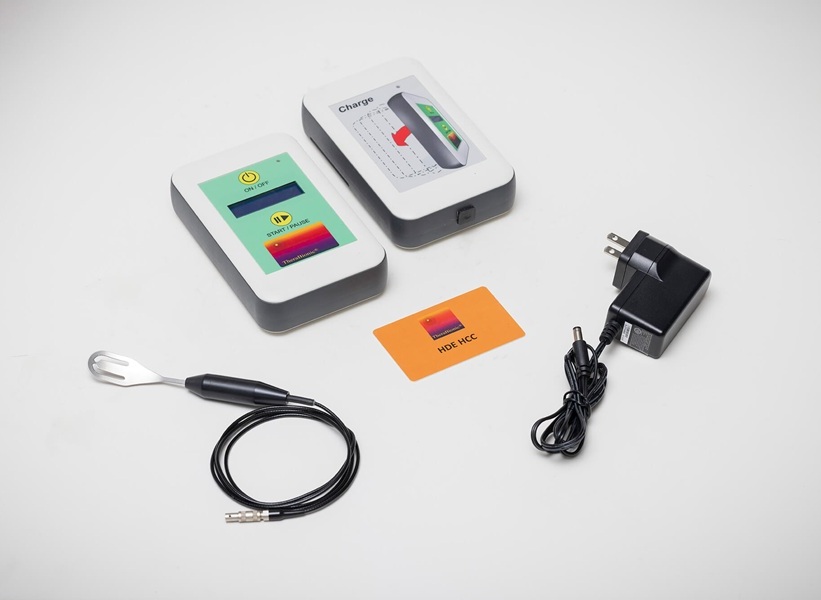MEDICA 2022 to Focus on How Health IT Can Contribute to More Sustainability in Health Care
|
By HospiMedica International staff writers Posted on 13 Oct 2022 |

When it comes to current developments within international health IT, there is no way around MEDICA (Düsseldorf, Germany), the world's leading medical trade fair and its accompanying program, which offers further professional insights. Apart from the new products of the more than 4,200 participants from about 70 nations at MEDICA 2022, many of whom showcase health IT solutions, the MEDICA HEALTH IT FORUM, an integrated part of the trade fair, will from 14 to 17 November once more offer an overview of top trends in data-driven medicine, provided by highly acclaimed speakers hosting presentations and talks.
With the “Digital Patient Journey”, for example, an important topic will be presented right at the start of MEDICA 2022 on Monday, 14 November, on the program stage of the MEDICA HEALTH IT FORUM. Moderator Prof. Felix Hoffmann, from the Apollon University for Health Care Management in Bremen, has already emphasized that processes in healthcare need improvements. For example, a fracture of the lateral malleolus (ankle bone) usually would only need standard treatment. But if a patient arrives at the hospital late in the evening, it could happen that rather less experienced doctors have to carry out treatment, according to Hoffmann. In this case, software-based check lists could render valuable support – for example those offered by Kumi Clinical. With the help of this software, clinical teams can plan, organize and synchronize treatment following a digital check list. From their arrival to check-ups in the aftermath of inpatient care, patients follow a digital treatment path, which is based on medical standards (SOPs) and can be flexibly adapted. All roles that share a part of the treatment process are integrated: doctors, care givers, service staff, hospital occupancy and discharge management, as well as medical controlling. This is to ensure that all participants are kept current at all times regarding the latest information, and the entire treatment path is followed correctly. The digital voice recognition software “voize” strives to contribute to the optimization of these processes using digital speech assistants, and will also be represented at this forum's symposium.
In a further symposium on Tuesday afternoon, 15 November, there will be a discussion of therapy plans based on artificial intelligence (AI). Alfa AI, for example, uses AI to create a therapy plan. The inherent intuitive application follows patients throughout the entire process, offers transparency as well as the prescribed training plan, including video lessons. In this way, Alfa AI brings together medical knowledge, long-term experience with sports and fitness, insights about proper nutrition and state-of-the-art technology. There are, however, misgivings concerning “check list medicine”. According to Prof. Felix Hoffmann though, these are more a matter of the proper mindset. “How do I approach treatment?”, “When is a customized form of treatment really necessary?”, and “When can treatments be standardized and carried out following previously defined paths?” are important questions in this context. For Hoffmann who is himself a trauma surgeon, it is a given that digitalization alone does not improve processes. The processes themselves also need improving. As a bad example, he cites the electronic prescription, which would in theory be unnecessary if medicines could be accessed directly, without going through a pharmacy. The pharmacists, however, probably beg to differ on this.
Improving processes in health care could also help fight climate change – for example through beneficial use of information technology. “How can Healthcare become more sustainable with digital help? ” is a question that Armin de Greiff, technical director at the university hospital in Essen will ask during the expert panel at the MEDICA HEALTH IT FORUM on Wednesday, 16 November, which is wholly dedicated to the issue of “Green Health & Sustainability”. “You cannot quite align furthering modern data-driven medicine with saving energy,” states de Greiff. However, he emphasizes that using medical networking does save energy, for example by helping to avoid repeat examinations. Images and findings should not be printed, faxed, sent by post and above all not be transported by taxi. Rather, it should be possible to access them anywhere, at any time.
Armin de Greiff further describes the use of AI for the generation of “virtual contrasts”. With appropriate training, networks are said to be able to predict different contrasts from simple data sets and thus save on time intensive examinations. AI could also help to reduce or eliminate the need for contrast agents during CT examinations. Saving on examination time while reducing radiation and contrast agents could be viewed from a sustainable perspective. On the other hand, this also means, according to de Greiff, that the persistent wish for the newest end user devices runs counter to sustainability. He goes on to explain in this context that the ever shortening product cycles serve to improve performance more than to reduce energy consumption. At the same time, he warns: “We are facing a paradigm shift.” With this, de Greiff calls attention to the fact that higher energy consumption in data centers is not necessarily the same as overall higher consumption of energy. Virtualization of the work place, e.g. through mobile working and by outsourcing applications with high processing demands to servers at a data centre, leads to a concentration of consumption, but not necessarily to raised levels of consumption overall.
Dr. Anna Levsen from the Deutsches Krankenhaus Institut, the German hospital association, also strives to improve processes. Her tech talk centers on “Circularity in the Healthcare Industry” on Wednesday, 16 November at 12:00 noon. Expanding on her presentation at the forum, Levsen calls attention to the strict limitations that hospitals face in their actions for sustainability and protection of the climate. However, she insists: “There is a big lever we can use here.” Levsen, too, sees the more sustainable use of, for example, large equipment as a chance. Outdated technical equipment is rather wholly renewed than repaired and kept in the system, as a circular economy would do. One solution could be a service contract with a manufacturer for medical technology, who could maintain the device in good working order. “Hospitals then would not own a device which they would have to throw away in the end, but they would own a contract according to which the company would provide the device, which would be kept usable as a high-quality product,” Dr. Levsen describes this approach. In this approach, manufacturers of medical technology would retain control over their devices.
There is also room to improve for many hospitals when it comes to food, reducing the number of surplus meals and avoiding waste. From a clinical perspective, technologies used in telemedicine within radiology for example, also offer options to reduce the need for resources. If patients must be taken care of at home while receiving telemedical treatment, they also need the appropriate devices and need training in how to use them – and this is often difficult to achieve as Dr. Levsen summarizes: “A lot of things aren't thought through.” Circular economy means that all processes from beginning to end would have to be thought through, and even single-use products could offer a more sustainable solution than expected, especially where hygiene is an issue. We talk a lot about reducing carbon emissions, but we also have to talk about keeping resources in the system,” Dr. Levsen emphasizes. For her, it is clear: “There is a need for action.” The main hindrance from the perspective of the hospital association are a lack of funds for urgently needed investments to protect the climate, which could also help to make the entire energy and resource cycle more efficient. Considering the current gas crisis, Levsen hopes that this will now set things into motion. Another challenge is to get hospital staff "on board”. As a rule of thumb, about ten percent of energy consumption can be saved by the users. Even taking the stairs instead of the lift or bringing your own coffee cup to work could help save resources. On the final day, 17 November 2022, the forum will focus on general developments and their possible relevance with regard to health IT. Some of the topics in the program are “Gender-sensitive medicine” and “New work & occupational health” as well as new developments in AI.
Related Links:
MEDICA
Latest Business News
- Philips and Masimo Partner to Advance Patient Monitoring Measurement Technologies
- B. Braun Acquires Digital Microsurgery Company True Digital Surgery
- CMEF 2025 to Promote Holistic and High-Quality Development of Medical and Health Industry
- Bayer and Broad Institute Extend Research Collaboration to Develop New Cardiovascular Therapies
- Medtronic Partners with Corsano to Expand Acute Care & Monitoring Portfolio in Europe
- Expanded Collaboration to Transform OR Technology Through AI and Automation
- Becton Dickinson to Spin Out Biosciences and Diagnostic Solutions Business
- Boston Scientific Acquires Medical Device Company SoniVie
- 2026 World Hospital Congress to be Held in Seoul
- Teleflex to Acquire BIOTRONIK’s Vascular Intervention Business
- Philips and Mass General Brigham Collaborate on Improving Patient Care with Live AI-Powered Insights
- Arab Health 2025 Celebrates Landmark 50th Edition
- Boston Scientific Acquires Medical Device Company Intera Oncology
- MEDICA 2024 to Highlight Hot Topics of MedTech Industry
- Start-Ups To Once Again Play Starring Role at MEDICA 2024
- Boston Scientific to Acquire AFib Ablation Company Cortex
Channels
Critical Care
view channel
Origami Robots to Deliver Medicine Less Invasively and More Effectively
Delivering medicine to ulcers or other internal sites often requires invasive procedures that can disrupt surrounding tissues and lengthen recovery times. Traditional magnetic actuators used in soft robotics... Read more
Improved Cough-Detection Technology Aids Health Monitoring
Coughing serves as an important biomarker for tracking a variety of conditions and can help monitor the progress of respiratory diseases or predict when someone’s asthma is being exacerbated.... Read moreSurgical Techniques
view channel
Novel Glue Prevents Complications After Breast Cancer Surgery
Seroma and prolonged lymphorrhea are among the most common complications following axillary lymphadenectomy in breast cancer patients. These postoperative issues can delay recovery and postpone the start... Read more
Breakthrough Brain Implant Enables Safer and More Precise Drug Delivery
Delivering medication directly to specific regions of the brain has long been a major challenge in treating neurological disorders. Current implants and infusion systems typically reach only one or two... Read morePatient Care
view channel
Revolutionary Automatic IV-Line Flushing Device to Enhance Infusion Care
More than 80% of in-hospital patients receive intravenous (IV) therapy. Every dose of IV medicine delivered in a small volume (<250 mL) infusion bag should be followed by subsequent flushing to ensure... Read more
VR Training Tool Combats Contamination of Portable Medical Equipment
Healthcare-associated infections (HAIs) impact one in every 31 patients, cause nearly 100,000 deaths each year, and cost USD 28.4 billion in direct medical expenses. Notably, up to 75% of these infections... Read more
Portable Biosensor Platform to Reduce Hospital-Acquired Infections
Approximately 4 million patients in the European Union acquire healthcare-associated infections (HAIs) or nosocomial infections each year, with around 37,000 deaths directly resulting from these infections,... Read moreFirst-Of-Its-Kind Portable Germicidal Light Technology Disinfects High-Touch Clinical Surfaces in Seconds
Reducing healthcare-acquired infections (HAIs) remains a pressing issue within global healthcare systems. In the United States alone, 1.7 million patients contract HAIs annually, leading to approximately... Read moreHealth IT
view channel
Printable Molecule-Selective Nanoparticles Enable Mass Production of Wearable Biosensors
The future of medicine is likely to focus on the personalization of healthcare—understanding exactly what an individual requires and delivering the appropriate combination of nutrients, metabolites, and... Read moreBusiness
view channel
Philips and Masimo Partner to Advance Patient Monitoring Measurement Technologies
Royal Philips (Amsterdam, Netherlands) and Masimo (Irvine, California, USA) have renewed their multi-year strategic collaboration, combining Philips’ expertise in patient monitoring with Masimo’s noninvasive... Read more
B. Braun Acquires Digital Microsurgery Company True Digital Surgery
The high-end microsurgery market in neurosurgery, spine, and ENT is undergoing a significant transformation. Traditional analog microscopes are giving way to digital exoscopes, which provide improved visualization,... Read more
CMEF 2025 to Promote Holistic and High-Quality Development of Medical and Health Industry
The 92nd China International Medical Equipment Fair (CMEF 2025) Autumn Exhibition is scheduled to be held from September 26 to 29 at the China Import and Export Fair Complex (Canton Fair Complex) in Guangzhou.... Read more
















